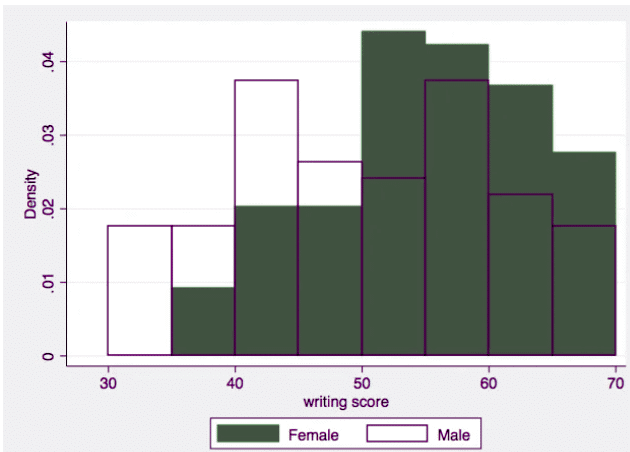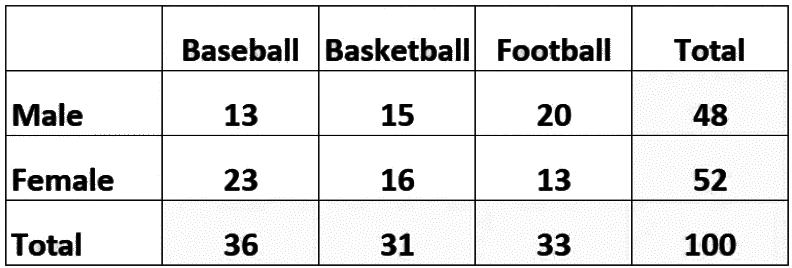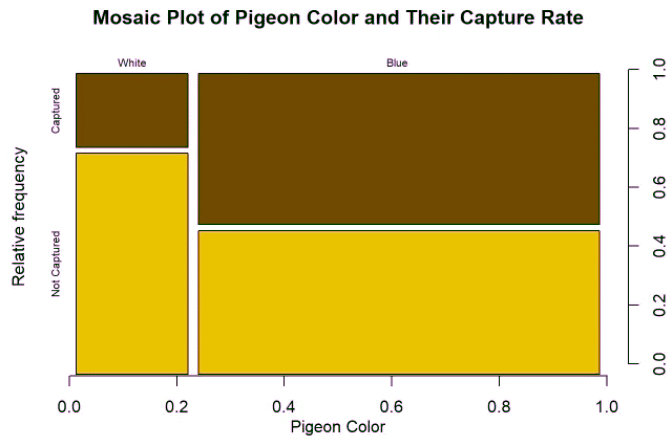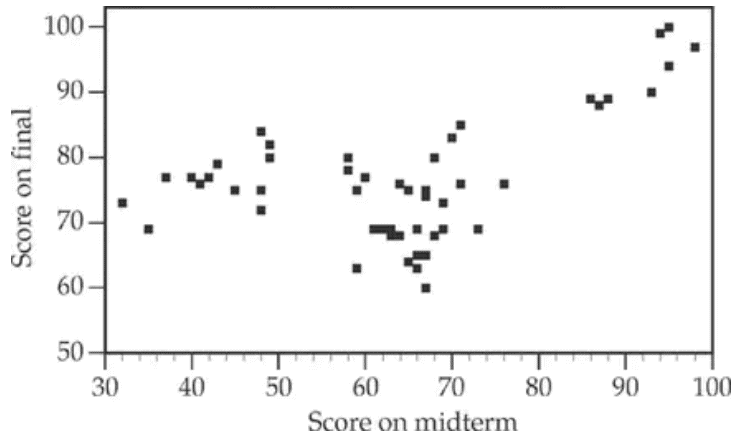Grade 9 Exam > Grade 9 Notes > AP Statistics > Chapter Notes: Introducing Statistics: Are Variables Related?
Introducing Statistics: Are Variables Related? Chapter Notes | AP Statistics - Grade 9 PDF Download
| Table of contents |

|
| Types of Data |

|
| Bivariate Categorical Data |

|
| Bivariate Quantitative Data |

|
| Why Study Variable Relationships? |

|
Types of Data
Data in statistics can be broadly classified into two types: categorical and quantitative. Categorical data represents characteristics or attributes, often expressed as percentages or proportions (e.g., eye color or grade level). Quantitative data, on the other hand, consists of numerical values that can be averaged or measured (e.g., height or test scores).
Bivariate Categorical Data
When studying relationships, we often collect data on two variables simultaneously. For instance, we might look at “grade level” (e.g., junior or senior) and “homework completion” (on time or not). This type of data, involving two categorical variables, is called bivariate categorical data.
To explore relationships between these variables, we can use several visualization tools:
- Histogram: A bar chart displaying the frequency of occurrences for each category combination. For example, it can show how many juniors and seniors complete homework on time versus those who don’t.

- Frequency Chart: Similar to a histogram but shows percentages instead of counts, making it easier to compare proportions across categories, like the percentage of students in each grade who finish homework on time.

- Mosaic Plot: A visual tool that uses rectangles to represent the proportions of data in each category combination. The size of each rectangle reflects the frequency or proportion, helping to highlight relationships between the two variables.

Bivariate Quantitative Data
When both variables are numerical, such as plant height and amount of fertilizer used, we’re dealing with bivariate quantitative data. The goal is often to determine if there’s a correlation, like whether more fertilizer leads to taller plants.
A primary tool for visualizing this data is the scatterplot. In a scatterplot, one variable is plotted on the x-axis and the other on the y-axis, allowing us to observe patterns or trends. For example, plotting fertilizer amounts against plant heights can reveal whether increased fertilizer correlates with taller plants (positive relationship) or shorter plants (negative relationship).
 Beyond visualization, statistical methods like correlation analysis can quantify the strength and direction of the relationship, helping determine if it’s significant and whether one variable can predict the other.
Beyond visualization, statistical methods like correlation analysis can quantify the strength and direction of the relationship, helping determine if it’s significant and whether one variable can predict the other.Why Study Variable Relationships?
Analyzing relationships between variables helps us understand if and how they influence each other. This can enable predictions—for example, knowing one variable’s value might help predict the other. Equally important, discovering that two variables are not related can be a significant finding, allowing us to rule out certain factors in a study.
Relationships between variables can be:
- Positive: As one variable increases, the other tends to increase (e.g., more study time, higher grades).
- Negative: As one variable increases, the other tends to decrease (e.g., more screen time, less sleep).
- No Relationship: No consistent pattern or trend exists between the variables.
Finding no relationship is just as valuable as finding one, as it helps narrow down factors affecting an outcome.
Question for Chapter Notes: Introducing Statistics: Are Variables Related?Try yourself: What type of data involves two categorical variables?View Solution
Key Terms to Review
- Bivariate Quantitative Data: Data involving two numerical variables, analyzed using scatterplots, correlation coefficients, or regression to uncover trends and relationships.
- Bivariate Categorical Data: Data involving two categorical variables, often displayed in contingency tables to show frequency or relationships between categories.
- Categorical Data: Variables grouped into distinct categories (e.g., gender, car type), used to analyze proportions and frequencies across groups.
- Frequency Chart: A visual tool showing the count or percentage of occurrences in each category, aiding in pattern identification.
- Histogram: A bar chart showing the frequency of data within intervals, useful for understanding the distribution of quantitative or categorical data.
- Mosaic Plot: A plot using rectangles to show proportions of categorical data, emphasizing relationships between two variables.
- Quantitative Data: Numerical data that can be measured or counted, used for statistical analysis and presented in charts or graphs.
The document Introducing Statistics: Are Variables Related? Chapter Notes | AP Statistics - Grade 9 is a part of the Grade 9 Course AP Statistics.
All you need of Grade 9 at this link: Grade 9
|
12 videos|106 docs|12 tests
|
FAQs on Introducing Statistics: Are Variables Related? Chapter Notes - AP Statistics - Grade 9
| 1. What is bivariate categorical data and how is it analyzed? |  |
Ans. Bivariate categorical data involves two categorical variables. To analyze this type of data, researchers often use contingency tables to observe the frequency of occurrences across different categories. Chi-square tests are commonly employed to determine if there is a significant association between the two variables.
| 2. What is bivariate quantitative data and what methods are used to analyze it? |  |
Ans. Bivariate quantitative data consists of two numerical variables. It is analyzed using methods such as scatter plots to visually assess the relationship, and correlation coefficients to quantify the strength and direction of the relationship. Regression analysis can also be used to model the relationship between the variables.
| 3. Why is it important to study relationships between variables? |  |
Ans. Studying relationships between variables helps to identify patterns and correlations, which can inform decision-making in various fields such as health, economics, and social sciences. Understanding these relationships can lead to better predictions and insights, guiding research and practical applications.
| 4. What are common examples of bivariate categorical data in real life? |  |
Ans. Common examples include surveys that categorize responses by gender and preference, such as whether men or women prefer a certain product. Another example is examining the relationship between education level (e.g., high school, college) and employment status (e.g., employed, unemployed).
| 5. How do researchers determine if a relationship between two variables is statistically significant? |  |
Ans. Researchers use statistical tests such as the Chi-square test for categorical data or t-tests and ANOVA for quantitative data to determine significance. A p-value is calculated; if it is below a predetermined threshold (commonly 0.05), the relationship is deemed statistically significant, indicating that it is unlikely to have occurred by chance.
Related Searches



















